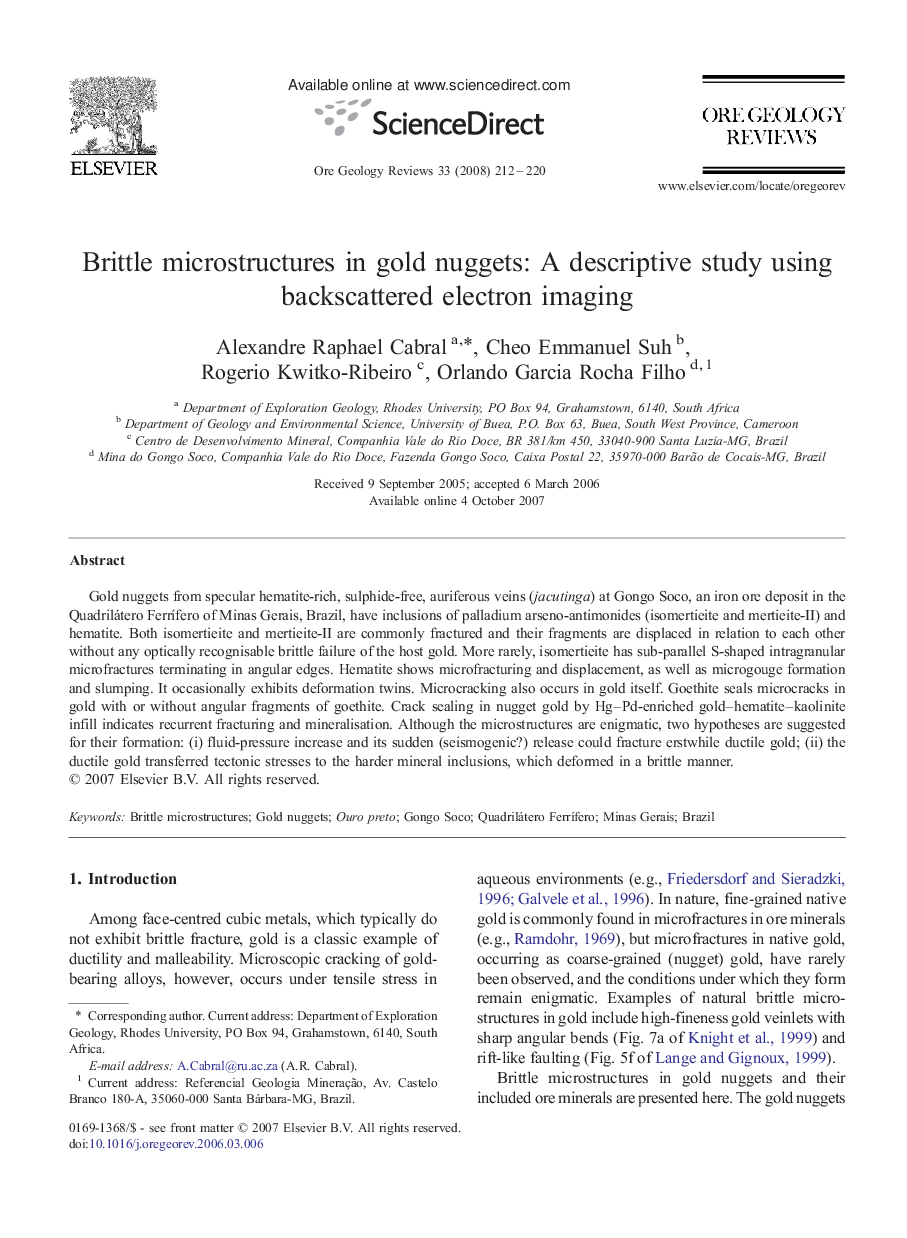| Article ID | Journal | Published Year | Pages | File Type |
|---|---|---|---|---|
| 4698019 | Ore Geology Reviews | 2008 | 9 Pages |
Gold nuggets from specular hematite-rich, sulphide-free, auriferous veins (jacutinga) at Gongo Soco, an iron ore deposit in the Quadrilátero Ferrífero of Minas Gerais, Brazil, have inclusions of palladium arseno-antimonides (isomertieite and mertieite-II) and hematite. Both isomertieite and mertieite-II are commonly fractured and their fragments are displaced in relation to each other without any optically recognisable brittle failure of the host gold. More rarely, isomertieite has sub-parallel S-shaped intragranular microfractures terminating in angular edges. Hematite shows microfracturing and displacement, as well as microgouge formation and slumping. It occasionally exhibits deformation twins. Microcracking also occurs in gold itself. Goethite seals microcracks in gold with or without angular fragments of goethite. Crack sealing in nugget gold by Hg–Pd-enriched gold–hematite–kaolinite infill indicates recurrent fracturing and mineralisation. Although the microstructures are enigmatic, two hypotheses are suggested for their formation: (i) fluid-pressure increase and its sudden (seismogenic?) release could fracture erstwhile ductile gold; (ii) the ductile gold transferred tectonic stresses to the harder mineral inclusions, which deformed in a brittle manner.
